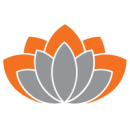An idea sparks, and sticks in your head. You conduct research, interviews and surveys, find a business partner and found the company. You build your tools; you prove the idea works.
Then begins the search for funding — a journey in its own right — but filling your war chest doesn’t mean you’re out of the woods just yet. Another challenge looms large: growing your business to the point where it can sustain itself.
It’s a tough ride, and not all companies make it. We talked to two Seattle tech founders about their experiences in successfully scaling their businesses, and the lessons they learned along the way.

TINYpulse helps businesses keep track of company culture and morale via anonymous responses to its miniature weekly surveys, known as “pulses.” Workers can vote for issues that matter most to them — thereby stimulating dialogue and action — and submit peer recognition. Employers access the resulting data and can correspond with employees to ask for clarification or further details while the TINYpulse platform maintains the worker’s anonymity.
After leaving BuddyTV, a company he founded in 2005 and saw through an acquisition by Comcast in 2007, TINYpulse founder and CEO David Niu took his family on a long trip through the Asia-Pacific region, making time to check in with business leaders along the way. By the time he’d returned home to Seattle, an idea had germinated for a totally new type of company.
Tell us about the early days at TINYpulse. When did you know you were onto something?
I’d left BuddyTV, a company I founded, and gone on a “careercation” around the world with my family. At every stop in our travels, I made time to talk to CEOs and leaders around the world. By the time I got back, I knew the problem my next company would solve: Leaders and management consistently told me they had no good way to gather the employee feedback that actually mattered.
With the right culture fit, a growing team weathers the ups and downs together, and challenges only bond them closer.”
I was convinced that solving that problem would be a game changer for companies. But we had to make the product, and then we had to make the case. I’d returned to Seattle in July 2012, and we were out of beta by September. I knew we were onto something from the very first paying customer, Skynet Broadband in Enumclaw, Washington. I knew it was sustainable by the following April, when we passed the hundred-client mark, and an article appeared in Fast Company called “10 Little-Known Apps Entrepreneurs Can’t Live Without,” where Rand Fishkin mentioned us. Seven months after launch, it rang true; we’d built something people had to have.
What pain points did you encounter as your team and customer base grew? How did you overcome those challenges?
As a SaaS company that was and is leading a brand new category — employee engagement software — we always have to focus on education. TINYpulse is a powerful tool, and it can transform organizations for the better. We were building the plane while flying it. It was vital for us to use TINYpulse not just for testing, but to build a culture of communication and collaboration, especially when we opened an office in Saigon in November 2014.
As you scale past a certain point, not everyone will know the foundational stories of the product, the successes and challenges that inform our vision. That’s why every new employee at TINYpulse attends what we call “Cultural Onboarding” — a session with me and fellow new hires where we discuss our history, mission, vision and values. It takes most of an afternoon, and it’s completely worth the investment.
What’s the most important factor in ensuring success for a growing team?
I think the single most important factor to ensure success for a growing team, or any team for that matter, is that we get the right people on the bus. Then we can ensure that they’re in the right seats too. But without everyone rallying and jealously defending a common culture, cracks will slowly start to emerge that threaten the core foundation of the company.
With the right culture fit, a growing team weathers the ups and downs together, and challenges only bond them closer. But without it, even small speed bumps spread toxicity that infects their culture. So the challenge is to not settle when there are so many job openings to fill and the organization needs to hire. Always take the time to deliberate, and hire for the right fit because mistakes have to be paid back with interest.
Highspot’s sales enablement platform helps businesses streamline workflows between sales, marketing teams and their customers. The platform integrates with more than 50 popular sales tools, including all the usual suspects (Salesforce, Okta, Outreach and so on) and features applications for presentations, content and analytics, all powered by an artificial intelligence that finds the most relevant content for each individual sales opportunity.
VP of Customer Services Oliver Sharp had already co-founded two companies — one of which went public and another which was acquired by Microsoft — when he helped start Highspot back in 2012. According to Sharp, one of this company’s key challenges was finding a sustainable and scalable route to market.
Tell us about the early days at Highspot. When did you know you were onto something?
As co-founders, we understood the problem we were looking to solve with our product firsthand, because we had struggled with it ourselves at a large enterprise. Despite the marketing team producing over 10,000 pieces of content every year, the sales team was not able to locate or use the right content when they needed it, and there was little visibility into the issue — no way of measuring what content was being used, what was working and what was not.
After talking with other companies, it was clear that this was a challenge almost everyone was grappling with, and for which no one had an answer. Therefore, when we founded Highspot, we knew we were providing an important solution to a widespread problem.
You need to remind people that they are involved in an adventure, and that adventures have comfortable parts and not-so-comfortable parts.”
We really knew we were onto something when our first enterprise companies adopted our software and their sales teams became incredibly active. Enterprise software notoriously struggles with the “shelfware” problem — solutions that management inflicts on employees, and that employees don’t like and don't use. Seeing the extremely high levels of engagement and use of our tools gave us the confidence that we were providing a solution that would help people be more effective in their jobs, and that would be adopted enthusiastically at scale.
What pain points did you encounter as your team and customer base grew? How did you overcome those challenges?
One of the key challenges we faced was finding the most effective and scalable way to go to market. Because sales enablement is an emerging role within many companies, and is usually being done by many different kinds of people with a variety of backgrounds, it is impossible to develop a single, scripted sales approach that will work broadly across the industry. To overcome this, we adapt our methods when we moved between vertical industries, because the sales model changes significantly. Leveraging the power of our own platform, our sellers can be creative and personalize their approach to the person they are speaking with and their individual business needs.
What’s the most important factor in ensuring success for a growing team?
When your business is experiencing fast growth, it can often put the company and culture under stress. As every process evolves, you need to ensure that you are building the right lines of communication; that you are being a careful steward of culture and employee happiness; and that you are focusing your energy on improving the key areas that will impede growth if you don’t invest in them. You need to remind people that they are involved in an adventure, and that adventures have comfortable parts and not-so-comfortable parts. Emphasize the mindset that you are all working together to build a company that everyone can be proud of. Supporting each other and keeping the shared end goal in mind at all times will result in a happy team and happy customers who use your product, and love interacting with your company.





